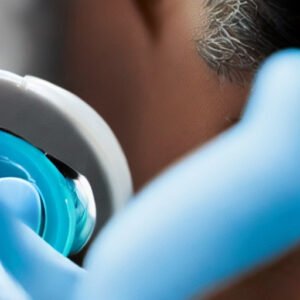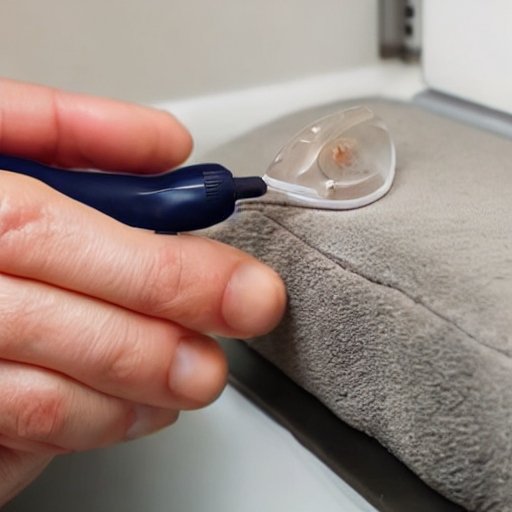Hearing aids are incredible technological advancements that help millions of people around the world improve their hearing and overall quality of life. These small devices are designed to be worn daily, and like any other piece of technology, they require regular maintenance to ensure their longevity and optimal performance. This essay will provide a comprehensive guide to Cleaning your hearing aid, covering essential maintenance tips and tricks to help you get the most out of your device.
Cleaning the Hearing Aid
Regularly cleaning your hearing aid is crucial for its proper functioning and longevity. Here are steps you can follow for effective cleaning:
Examine the hearing aid:
Before cleaning, inspect your hearing aid for any visible dirt, debris, or wax build-up. If you notice any, gently remove it using a soft, dry cloth or a cleaning brush provided by the manufacturer.
Clean the receiver tube:
If your hearing aid has a receiver tube that fits into your ear canal, it is essential to keep it clean. Use a wax pick or a loop tool to carefully remove any accumulated earwax or debris. Ensure that you are gentle to avoid damaging the delicate receiver tube.
Wipe the hearing aid:
Once you have removed any visible debris, use a slightly damp cloth or special cleaning wipes designed for hearing aids to wipe the device. Avoid using water, cleaning products, or solvents, as they may damage the internal components. It is crucial to check the manufacturer’s guidelines for approved cleaning methods specific to your model.
Dry the hearing aid:
After wiping, allow your hearing aid to air dry completely before inserting the battery or closing the battery compartment. This prevents moisture build-up that can damage the device.
Battery Care
Proper battery care is vital to ensure the uninterrupted functioning of your hearing aid. Here are some guidelines to follow:

Choose the right batteries for your Hearing Aid:
Make sure to use the correct type and size of batteries recommended by your hearing aid manufacturer. Using the wrong batteries may result in reduced performance or damage to the device.
Store batteries properly:
Keep spare batteries in a cool, dry place at room temperature. Avoid storing them in hot or humid environments, which can decrease their lifespan.
Replace batteries regularly:
Check the battery level indicator on your hearing aid frequently to monitor the battery’s life. Replace the battery promptly when the indicator shows a low charge, as a depleted battery can affect the performance of the device.
Battery removal at night:
Before going to bed, remove the battery from your hearing aid. This will help prevent any potential corrosion from a drained or leaking battery and extend its overall lifespan.
Protecting Your Hearing Aid

Proper protection of your hearing aid is essential, as it can prevent damage in various situations:
Avoid exposure to water:
Water is one of the biggest enemies of hearing aids, so it’s essential to keep them away from water sources such as showers, swimming pools, or rainy weather. Consider wearing a protective cover or sleeve during activities that involve water or excessive sweat.
Use a storage case:
Invest in a protective case to store your hearing aid when it’s not in use. This will protect it from dust, dirt, and accidental damage.
Minimize exposure to extreme temperatures:
Exposing your hearing aid to extreme heat or cold can negatively impact its performance and damage its internal components. Avoid leaving it in direct sunlight, near heaters, or freezing environments.
Hearing Aid Servicing and Maintenance
Regular maintenance and professional servicing can help prolong the life of your hearing aid. Here are some important considerations:
Professional cleanings:
Schedule regular visits with your hearing healthcare professional for professional cleanings and check-ups. They have specialized equipment to remove any hard-to-reach debris and ensure optimal functioning of your device.
Firmware and software updates:
Stay updated with the latest firmware or software releases from the manufacturer. These updates can improve the overall performance and functionality of your hearing aid.
Handle with care:
Always handle your hearing aid with clean hands and avoid dropping it. Rough handling can lead to internal damage, reducing its lifespan.
Conclusion
Proper care and maintenance of your hearing aid are essential for ensuring its longevity and optimal performance. Following the cleaning instructions provided by the manufacturer, handling it with care, and paying attention to battery maintenance are key to extending its life. Additionally, protecting it from water, and extreme temperatures, and investing in professional check-ups are vital for maintaining its effectiveness. By adhering to these guidelines, you can confidently enjoy the improved hearing experience that your hearing aid provides for many years to come.
